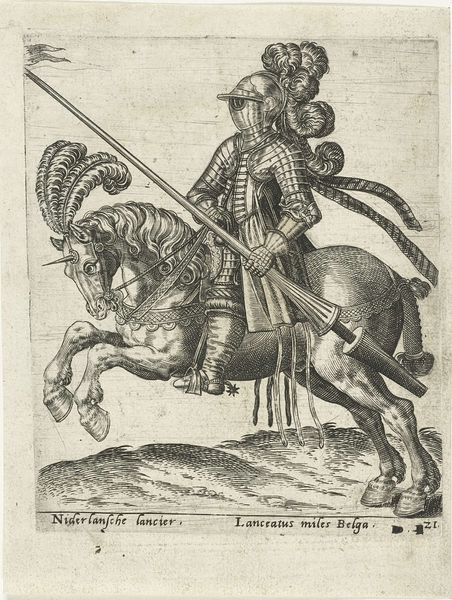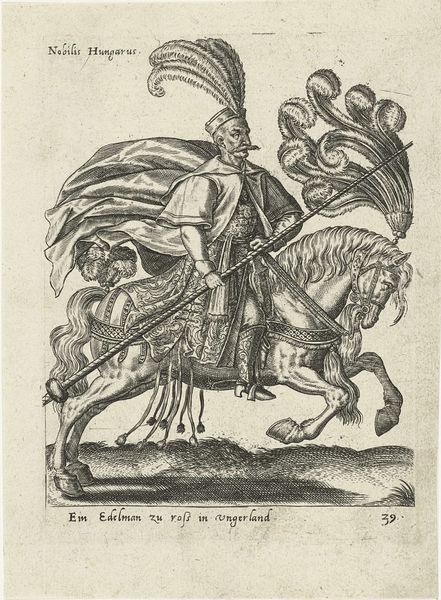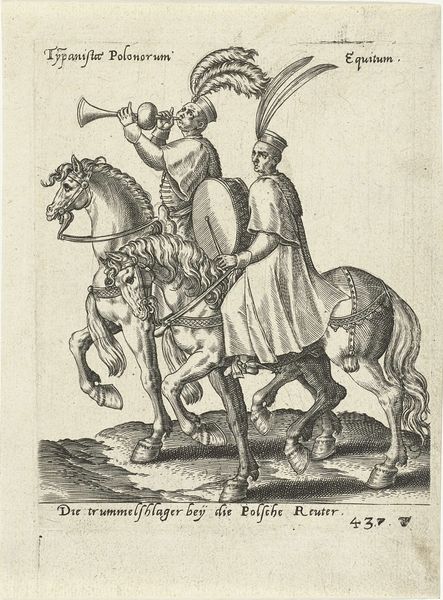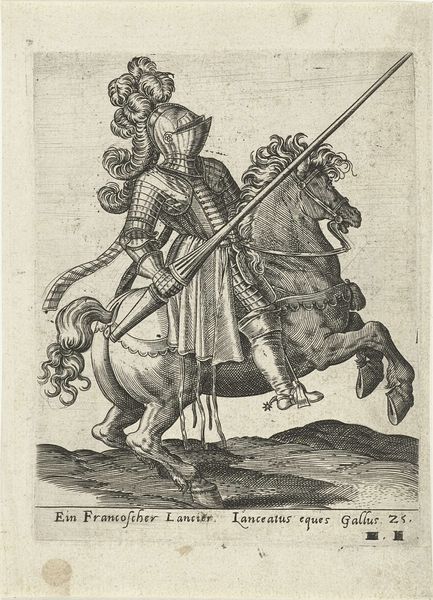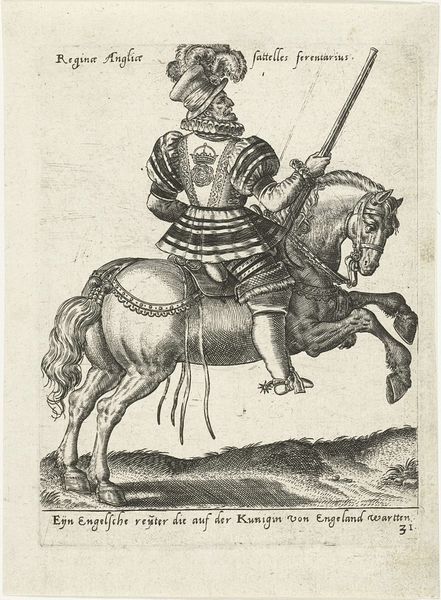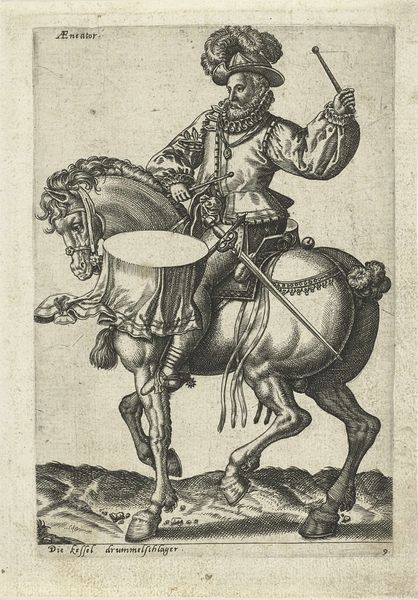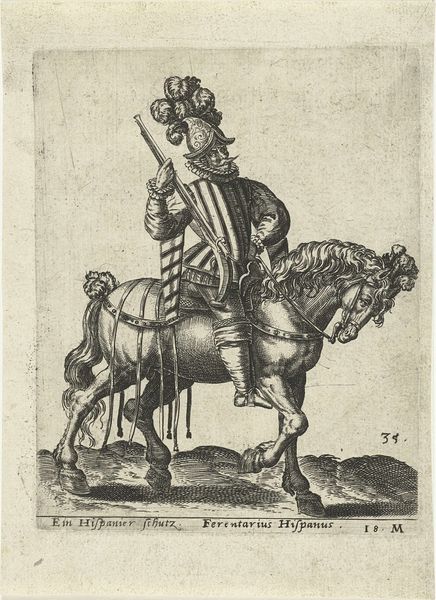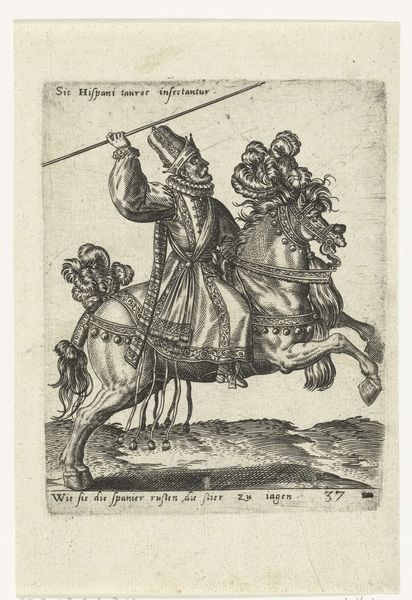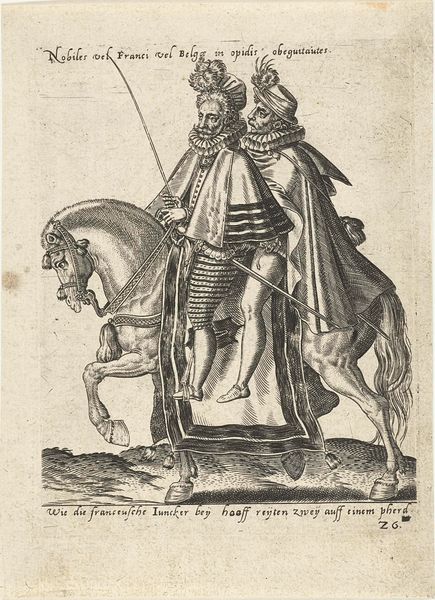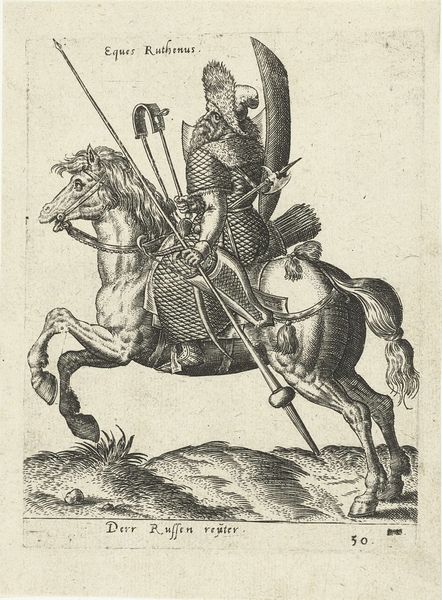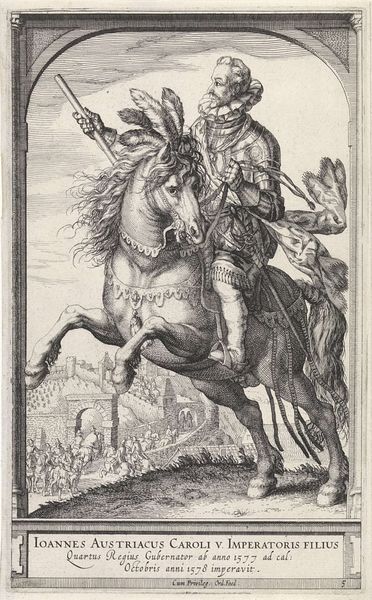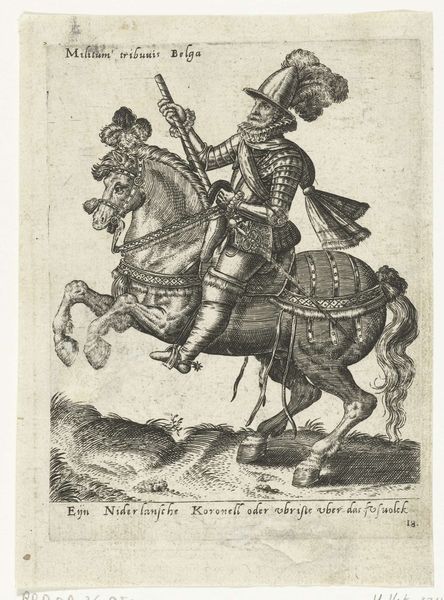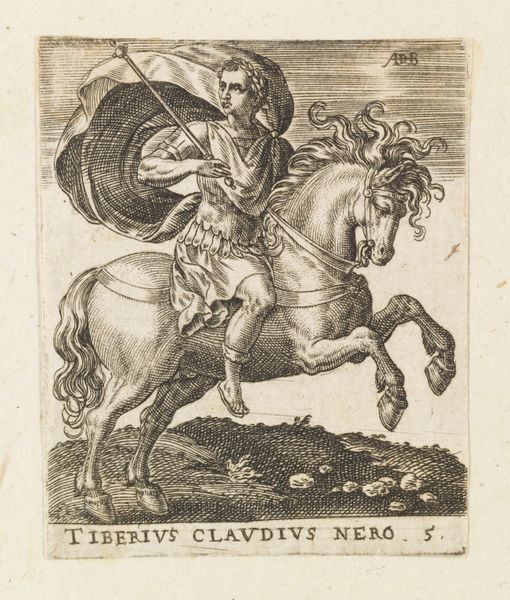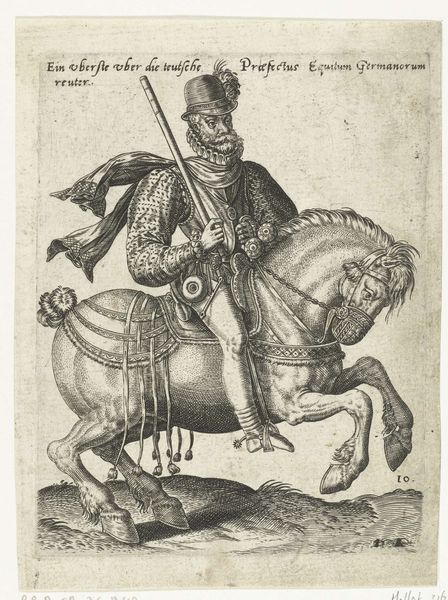
print, metal, engraving
#
portrait
# print
#
metal
#
old engraving style
#
history-painting
#
engraving
Dimensions: height 185 mm, width 126 mm
Copyright: Rijks Museum: Open Domain
This print presents George, Count of Nassau-Beilstein, in equestrian regalia. The horse, a symbol of power and nobility, is captured mid-stride, with a coat of arms and a blank roundel above. The rearing horse is not merely a display of horsemanship, it echoes the classical motif of the "caballus triumphalis," found in ancient Roman art. This pose has long been used to signify triumph and control. We see similar representations throughout the Renaissance, notably in equestrian statues of condottieri, each building upon this established iconography. Here, it is intended to project an image of might and authority. But consider, too, how the blank roundel floats above the Count, awaiting, perhaps, a personal emblem. The cyclical nature of symbols shows us that this visual language has constantly evolved, re-emerging across eras, adapted by artists seeking to connect with, and build upon, the past. The emotions evoked by the rearing horse—power, control, even a hint of dominance—speak to the subconscious, a potent reminder of how images, and their inherent psychological weight, resonate through time.
Comments
No comments
Be the first to comment and join the conversation on the ultimate creative platform.
